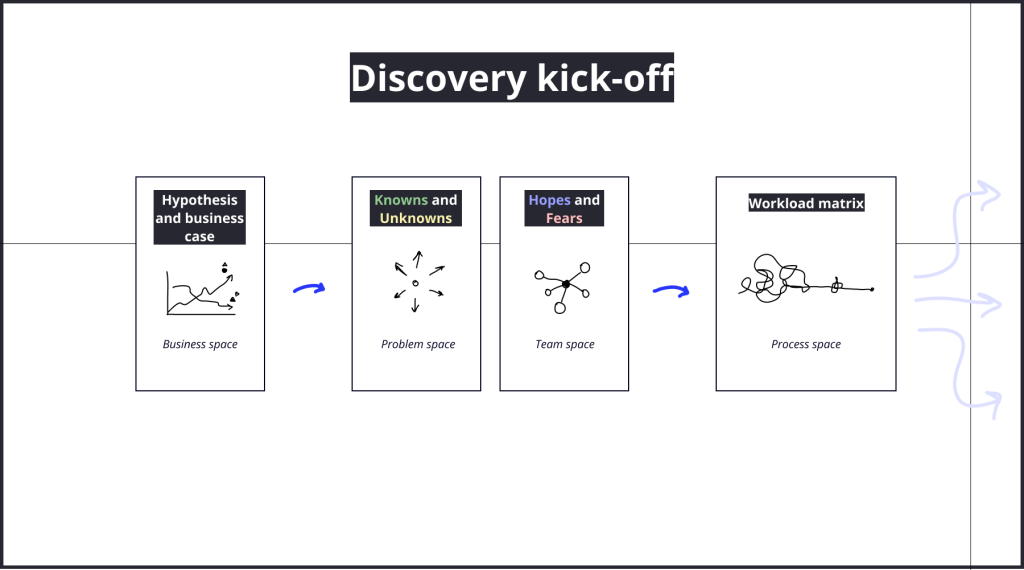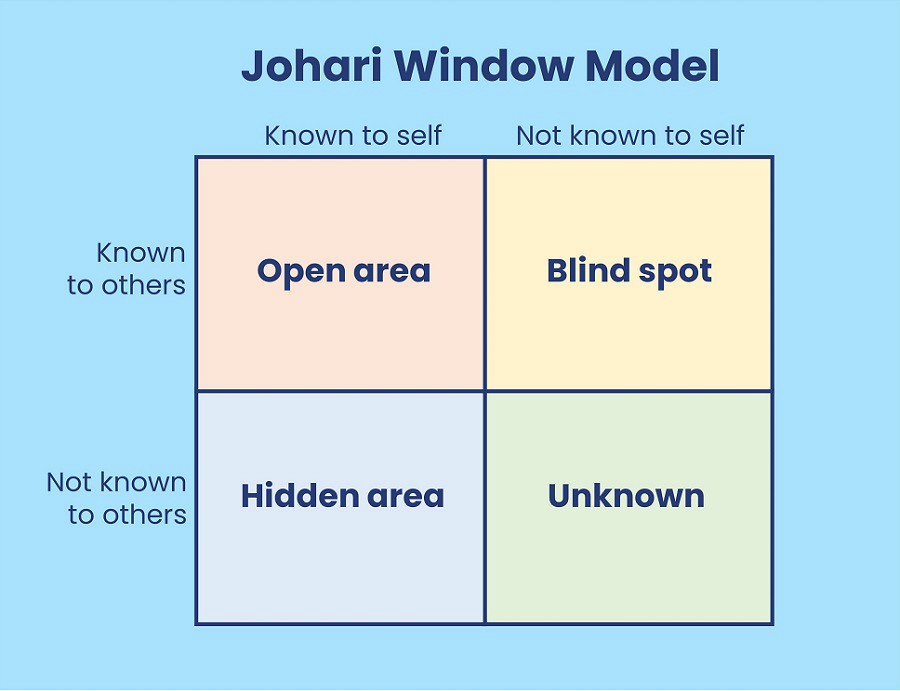Discovery kick-off: 3 simple tools
I like to think that Design Discovery starts with a Kick-off. If done right, it will set up a scene for an entire project. After compiling three decision making tools by great minds of design and beyond I figured a kick-off “formula” emerged.
This kick-off flow does 3 things:
- examines problem and risk understanding
- gives space to the entire team to get involved
- helps with decisions on the next steps
This framework operates within 4 spaces of a challenge:
- Business space
- Problem space with a dive-on
- Team space
- and ultimately, Process space

Let’s break it down into bits.
Knowledge matrix or Knowns and Unknowns
In my first Muay Thai class our teacher showed us a “ladder of a boxer”. I don’t remember the whole print but the second step was Unconsciously Incompetent “I don’t know what I don’t know” and one of the last steps later it said Consciously Incompetent “I know what I don’t know”.
Being aware of what one can or can’t do, or what one knows, is a wisdom that can save us from a knock out or a from overconfidence-infused failure. As Dan Brown suggests, “Discovery is hard because the first step in any process is hard. Embracing the discovery mindset means putting yourself in a vulnerable position. You are actively admitting that you don’t know enough to solve the problem – that’s challenging for everyone”.
Not knowing something doesn’t mean getting blocked, it just means we potentially can mitigate the risks and watch out for certain metrics.
Knowledge matrix can help us with that. This tool originates in psychology, where it’s known as Johari Window Model. It was later adapted by risk management and popularised by Donald Rumsfeld, US Secretary of Defense at that time.
The original Johari Window it focused on self and others:

Its later adaptation for risk management can be simplified to the following:

This matrix helps us map our awareness and knowledge about the problem: an essential step to plan discovery effort. Do we know enough about people who need X? Do we actually know enough about the X? Do we know why we have decline/increase in Y? And so on.
At times, I personally find it hard to navigate between the bottom squares. Depending on the scale of the challenge we can also simplify the matrix to Knowns and Unknowns.

Pre-requisites:
It’s worth having a look at data and available research before jumping into Knowns and Unknowns so there is some substantial material to talk about.
Time to prep: Whatever is required to revise data and previous research
Time: 30 min – 1 hour team or individual brainstorming
How to: Brain writing session with a followup around-the-room and a discussion
Roles: Facilitator, Scribe, Participant
Once we have the matrix ready, we let it sit on the board and move to the next tool.
Hopes and Fears

As the title suggests, this space is more emotional. Hopes and Fears gives room for the team to raise concerns: it could be anything from scope, technical issues, lack of internal knowledge (from the first board) to lack of time.
It is also a place to voice hopes about a challenge. Maybe it’s a problem we all wanted to tackle for a while. Maybe we have the best team to do so. Whatever that is it will unite us on goals and sentiment.
I came across this tool in IDEO “Cultivating creative collaboration” course and it made its way into the course from IBM Enterprise Design Thinking Toolkit, which says:
-When should you use this activity?
-At any point that feels like the very beginning <…>
In my experience, the very first pilot to adopt this ritual has changed the course of our initiative, since we have openly spoken about what we feared the most and adjusted our plans accordingly. There are no wrong or right answers here, people come from different places and whatever are the hopes or fears they need to be respected.
Pre-requisites: It’s beset to inform the team in advance so async thinking can happen
Time to prep: Varies
Time: 30 min – 1 hour team or individual session
How to: Brain writing session with a followup around-the-room and a discussion
Roles: Facilitator, Scribe, Participant
Now that we have Knowledge Matrix and Hopes & Fears we can move to the final step where the two activities will feed a framework that decides the further steps.
Prioritisation framework by Jeanette Fuccella

Noone will explain it better than Jeanette Fuccella herself but a summary goes as follows: she created this 2×2 square to make decisions about research workload because she “had a hard time saying no”, as she puts it. That’s how it started anyways.
On one axis we have problem clarity, on the other – risks, to pin a challenge on this matrix we can get our previous two boards and access the issues.
This simple 2×2 square will help allocate research resource and decide on the tools we can use to validate assumptions or ideas. Jeanette Fuccella specifies that the risk here “specifically refers to the risk of getting it wrong.” and that it helps us understand how right we need to be in the first iteration, rather than further elaborations.
In practical terms placing an issue on one of the squares can make a huge difference: we could either go for foundational research “for the most opaque problems of our industry” or for a A/B test of a rapidly created solution. It could mean weeks before going into solution stage or it could go to a soft release next week. In her blog Jaenette Fuccella also gives an example of a revisited matrix by Michael Oberle that is focused on tools.

Being a wonderful researcher, Jeanette Fuccella is open to feedback and further evolution of this framework. She recalls feedback to her original post that sparked new ideas, such as thinking in cycles instead of dimensions since “cementing” a chosen approach doesn’t sound realistic. The next iteration, she says will incorporate this feedback.
That means that we can always change the course and revisit our mapping when we know more. As Dan Brown suggests in Practical design discovery, discovery is not strategy and it isn’t execution. It’s tempting to think of discovery as the first stage, but in practice it is injected in every stage of our processes.
Pre-requisites: I’ve noticed that this activity does require collective intuition and experience as a team: it works best when we know how to work together, our capacities and have a sense of our customers.
Time to prep: Time to go through the first two rituals
Time: 30 min – 1 hour team or individual session
How to: A discussion that starts with Problem clarity and Risk placement based on the two first rituals
Roles: Facilitator, Scribe, Participant